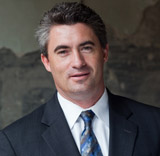Eugene Kane:
As I regularly pass by the former Malcolm X Academy that has been vacant for years, the words of a legendary African-American educator comes to mind:
“No schoolhouse has been opened for us that has not been filled.”
Booker T. Washington said that in 1896 during an address to urge white Americans to respect the desire by most African-American parents to seek the best possible education for their children.
Fast-forward to 2013 in Milwaukee, and the issue of vacant school buildings gives a pecular spin to Washington’s words. Back then, he could never have imagined the combination of bureaucracy and politics that has some educators scrambling to find spaces to fill with African-American students.
The campaign by a local private school funded by taxpayers to buy the former Malcolm X Academy at 2760 N. 1st St. has caused some in town to question why Milwaukee Public Schools hasn’t done more to turn closed school buildings into functioning houses of learning.
In particular, some conservatives question why MPS hasn’t been willing to sell valuable resources to school choice entities that are essentially their main competition for low-income minority students.
Actually, that stance seems valid from a business standpoint; why help out the folks trying to put you out of business?
The City of Milwaukee: Put Children First!
St. Marcus is at capacity.
Hundreds of children are on waiting lists.
Over the past decade, St. Marcus Lutheran School in Milwaukee’s Harambee neighborhood has proven that high-quality urban education is possible. The K3-8th grade school has demonstrated a successful model for education that helps children and families from urban neighborhoods break the cycle of poverty and move on to achieve academic success at the post-secondary level and beyond.
By expanding to a second campus at Malcolm X, St. Marcus can serve 900 more students.
WILL Responds to MPS on Unused Schools Issues
On Tuesday, Milwaukee Public Schools responded to WILL’s report, “MPS and the City Ignore State Law on Unused Property.” Here is WILL’s reply:
1. MPS’ response is significant for what it does not say. WILL’s report states that, right now, there are at least 20 unused school buildings that are not on the market – and practically all of these buildings have attracted interest from charter and choice schools. As far as its records reveal, MPS refuses to adopt basic business practices, such as keeping an updated portfolio of what is happening with its facilities. How is the public to know where things stand when it is not clear that MPS keeps tabs on them?
2. MPS thinks everything is okay because it has sold four buildings since 2011 and leases to MPS schools. MPS’ response is similar to a football team (we trust it would be the Bears) celebrating that they scored two touchdowns in a game – only to end up losing 55-14. Our report acknowledged that MPS had disposed of a few buildings, but when there are at least 20 empty buildings – and substantial demand for them – claiming credit for selling a few is a bit like a chronic absentee celebrating the fact that he usually comes in on Tuesdays. Children and taxpayers deserve better.
Conservative group says MPS, city not selling enough empty buildings
A conservative legal group says that Milwaukee Public Schools is stalling on selling its empty school buildings to competing school operators that seek school facility space, and that the City of Milwaukee isn’t acting on a new law that gives it more authority to sell the district’s buildings.
The Wisconsin Institute for Law & Liberty, which supports many Republican causes, says its new report shows that MPS is preventing charter schools and private schools in the voucher program from purchasing empty and unused school buildings.
But MPS fired back yesterday, saying the legal group’s information omits facts and containts false claims.
For example, MPS Spokesman Tony Tagliavia said that this year, five previously unused MPS buildings are back in service as schools.
He said MPS has also sold buildings to high-performing charter schools. Charter operators it has sold to such as Milwaukee College Prep and the Hmong American Peace Academy are operating schools that are under the MPS umbrella, however, so the district gets to count those students as part of its enrollment.
Bill Boelter
My entire career of close to 50 years has been focused on growing a business in and close to the city of Milwaukee. This is where I have my roots. I have followed education closely over these years.
The Aug. 17 Journal Sentinel had an interesting article about conflicting opinions on what the most viable use is for the former Malcolm X School, which closed over six years ago.
The Milwaukee School Board has proposed to have the city convert the site into a community center for the arts, recreation, low-income housing and retail stores. The cost to city taxpaying residences and businesses has not been calculated. Rising tax burdens have been a major factor in the flight to the suburbs and decline of major cities across our country.
St. Marcus Lutheran School is prepared to purchase Malcolm X for an appraised fair market value. St. Marcus is part of Schools That Can Milwaukee, which also includes Milwaukee College Prep and Bruce-Guadalupe Community School. Other participating high performing schools are Atonement Lutheran School, Notre Dame Middle School and Carmen High School of Science and Technology. Support comes from private donations after state allowances for voucher/choice students.
Their students go on to graduate from high school at a rate of over 90%, compared to approximately 60% at Milwaukee Public Schools. The acquisition of Malcolm X would give an additional 800 students the opportunity to attend a high performing school and reduce waiting lists at St. Marcus.
 Henry Tyson, Superintendent of Milwaukee’s
Henry Tyson, Superintendent of Milwaukee’s 